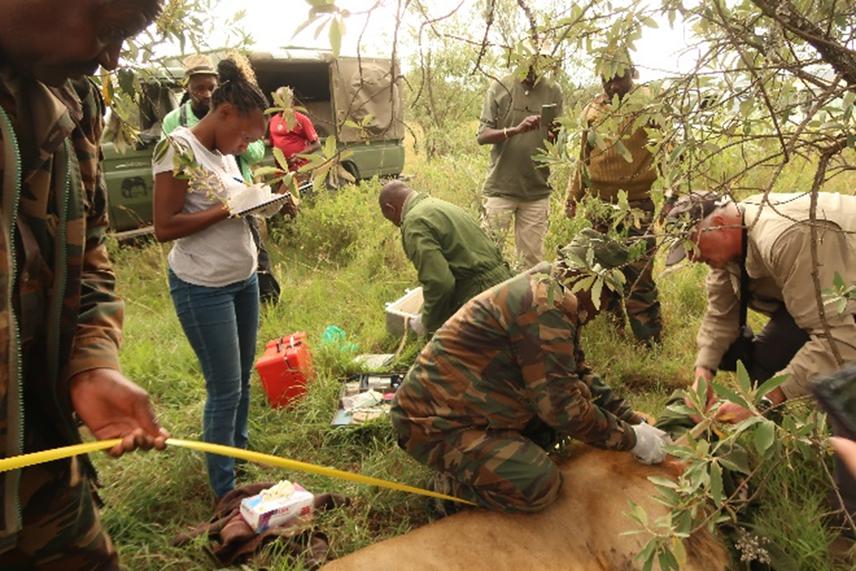Monica Mumbi Chege
Other projects
2 Apr 2019
To Fence or Not: Factors Influencing Lion Population Dynamics and Conflict, a Case Study of Two National Parks in Kenya
The project aims to investigate the distribution of genetic diversity of lions in Kenya based on genome-wide Single Nucleotide Polymorphisms (SNPs) to inform their conservation and management in the following areas:
1) Management of conflict individuals through translocation: we hope the results will guide in determining suitable target populations to which lion conflict individuals can be translocated to (based on genetic signatures),
2) Early warning system: where we will look into the inbreeding risks that may be brought about by low genetic diversity in small and/or isolated populations,
3) Population management: inform decision making regarding translocation(s) that mimic gene flow, if this would be considered necessary in situations where populations may require augmentation.

Data recording ©Jeroen en Monique Stam
In Kenya, lions (Panthera leo) form a vital component of the ecosystems they occur in and play a critical role in the tourism industry (KWS, 2020). However, their population has been reported to be declining and their range reducing due to increasing anthropogenic pressures, human-lion conflicts, habitat loss and fragmentation (Inskip and Zimmermann, 2009, KWS, 2020). To safeguard the current population managers in Kenya have adopted several strategies, among them - fencing of wildlife areas to separate human activities and wildlife and translocation of lions that repeatedly attack livestock (‘problem’ lions).
Lions are wide-ranging species and require large and interconnected areas and while fencing may play a significant role in reducing conflict, it also increases isolation as connectivity between populations may be reduced and/or terminated, thereby increasing the risk of inbreeding depression. Translocation of problem lions on the other hand, has been used for several years as a conflict mitigation tool, but its effectiveness and impact has not been assessed. Further, genetic properties of the translocated individuals or the target population release site have not been taken into consideration and may influence the natural distribution patterns of lion diversity in the country (Bertola et al., 2019).
Thus, this project aims to assess the impact of these two management strategies i.e., 1) translocation and 2) fencing on the genetic diversity of lions in Kenya. To enable this, we aim to genotype 171 lion DNA samples (that are representative of the national lion population) using a lion specific Single Nucleotide Polymorphism (SNPs) panel described by Bertola et al., 2019. From these data we will be able to determine the variation within the genomes and map out the distribution of genetic diversity within the Kenyan lion populations and thus assess the patterns and levels of diversity to gain insight into the impact of fencing and translocation. This project will be fundamental in providing vital baseline information for the establishment of a lion genetic management plan and strategy for Kenya.